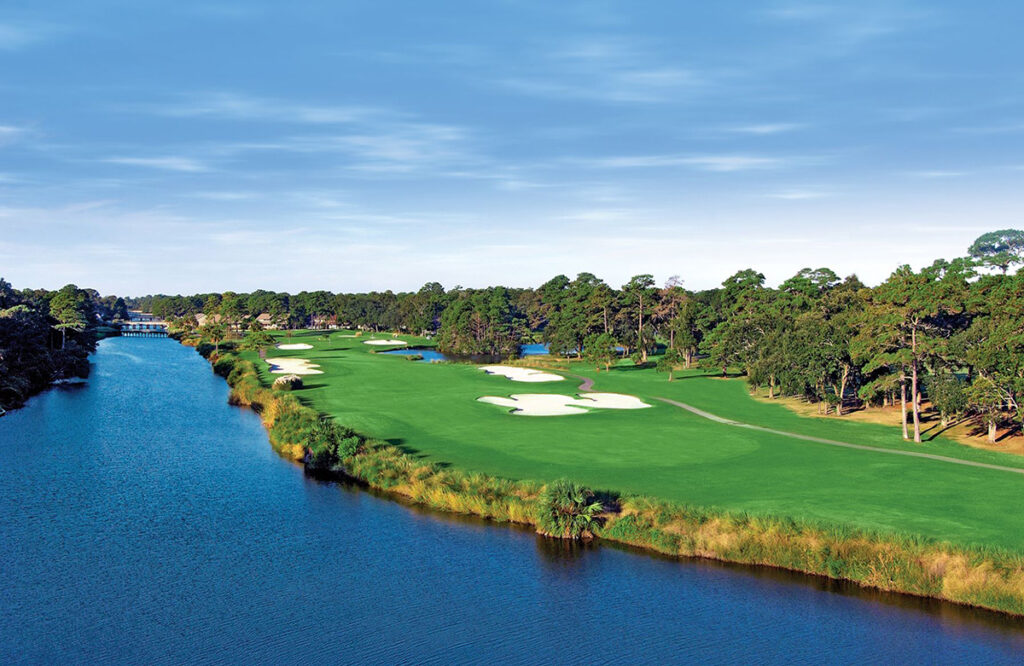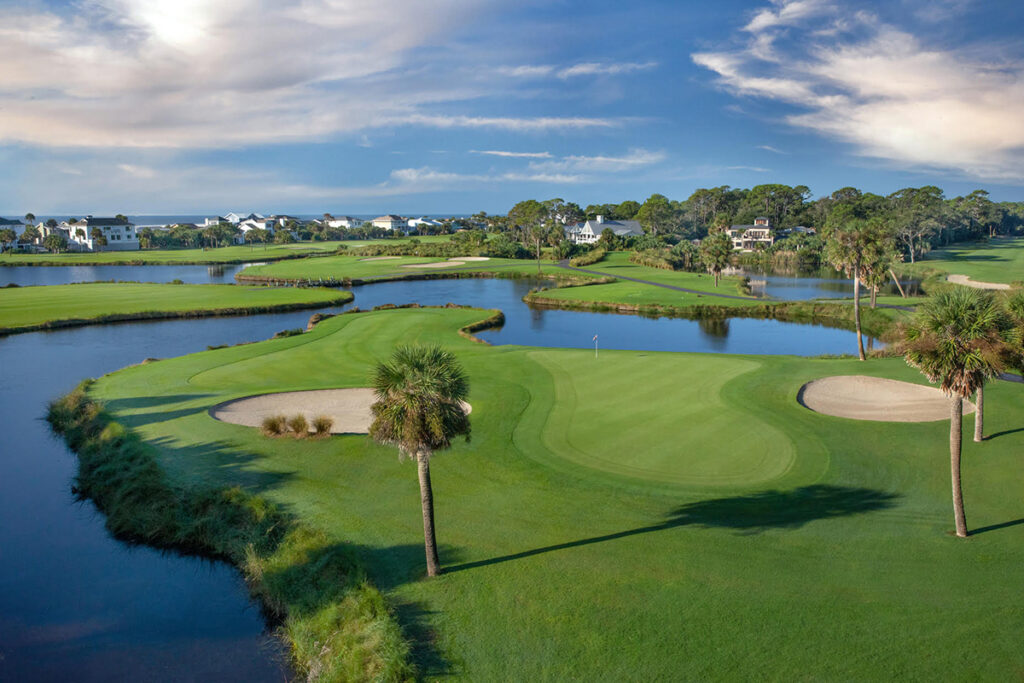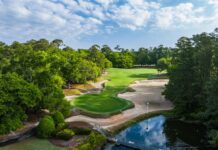As most golfers know by now, golf is big in South Carolina. How big, you ask?
According to the South Carolina Department of Parks, Recreation, and Tourism (SCPRT), the game had a $3.3 billion impact on the state’s economy in 2021, contributing to 38,000 jobs and $18.3 million in Admissions Tax collections.
“South Carolinians love golf, and golfers love South Carolina,” S.C. Gov. Henry McMaster said during a recent news conference to celebrate golf’s success in the Palmetto State. “In South Carolina, golf is more than a game played on some of the most beautiful courses you’ll find anywhere in the world – it’s an economic engine fueled by passionate, hardworking people who love and honor the golf tradition, and who make an incredible impact on our economy and quality of life.”
And this week, it’s a game played by the best players in the world at the Congaree Golf Club in Ridgeland, two hours south of the capital city of Columbia. The PGA TOUR is in the state for the CJ Cup, which has moved from South Korea to Las Vegas and now South Carolina. The CJ Cup, which was previously part of a PGA TOUR “Asian Swing,” had been played in Las Vegas the last two years. It moved to Congaree this season, which also hosted the Canadian Open in 2021 due to COVID-19 restrictions.
Rory McIlroy is the defending champion, headlining the strongest field of the fall with 15 of the top-20 ranked players in the world competing. The CJ Cup is a limited-field, 78-player event with no cut. The purse weighs in at just over $10.5 million, with $1,890,000 for the winner. Congaree is just 90-minutes away from the Ocean Course at Kiawah Island Resort, host of the 2021 PGA Championship, and 50 minutes from Harbour Town Golf Links at The Sea Pines Resort, perennial host of the TOUR’s RBC Heritage.

Congaree, which opened in 2018, is one of the all-time great stories in golf. It only has two official members, billionaire founder Dan Friedkin and the late Robert McNair, former Houston Texans owner. Instead, it has ambassadors who donate their time to growing the game at a grassroots level, helping kids who lack the financial, parental or social advantages of many junior golfers entering the game.
Many architectural aficionados consider the golf course at Congaree among Fazio’s best. Golf Digest ranks it as the second-best course in South Carolina behind only the aforementioned Ocean Course. It debuted as the 39th-ranked course in America in the magazine’s top 100. Golfweek rates Congaree as the No. 2 private course in the state and tied for 22nd on its Best Modern Courses list.
Hilton Head ‘Golf Island’
What do CJ Cup, the RBC Heritage and the 2021 PGA Championship all have in common? They’re played on golf courses in South Carolina’s famed Lowcountry. The Southeastern swath of the state is a flat, coastal plain covered with palmettos and Spanish moss-draped Live Oaks and marked by barrier islands connected to the mainland by grassy tidewater savannahs. At the heart of it all is Hilton Head Island, one of the true golf capitals of the world.
“Golf Island,” as it’s dubbed, includes the surrounding areas of Bluffton (just west of the island, proper), historic Beaufort, and tranquil Fripp Island to the north. Golfers will find courses upon courses, ranging from TOUR venues like Harbour Town Golf Links to one of the country’s best military courses, The Legends Golf Course at Parris Island. Longtime traveling golfer favorites include Palmetto Dunes Oceanfront Resort, featuring three tournament-caliber tracks, Palmetto Hall, with 36 holes, and of course, The Sea Pines Resort, boasting 54 holes. There are many lesser-known gems as well, like Old South Golf Links, Hilton Head National and Oyster Reef (designed by Rees Jones).
Hilton Head Island isn’t the only Lowcountry atoll with considerable “game.” Fripp Island, home to the vastly underrated Fripp Island Golf and Beach Resort, houses a classic George Cobb-designed course, Ocean Point, and one of Davis Love III’s first design credits (via Love Golf Design), Ocean Creek. Golfers can stay in cottages or condos along either course, or opt for luxury rental homes on the coast or interior of the island.
Elevated Fazio

Tom Fazio made a name for himself in the Carolinas throughout the 80s, 90s and early 00s, well before the opening of Congaree. In large part due to moving from southeast Florida to Hendersonville, N.C. in the late 80s to work on Wade Hampton Golf Club in Cashiers. He eventually settled in Hendersonville, opening an office on Main Street. From there, Fazio crafted what he dubbed his “Mountain Masterpiece,” Champion Hills, where he’s still an honorary member.
In addition to Champion Hills and Wade Hampton, Fazio designed the courses at Mountaintop Golf and Lake Club in Cashiers and Diamond Creek Golf Club in Banner Elk, also developed by the Friedkin Group. Golf lovers – and raters from Golfweek, Golf Digest, GOLF Magazine and other outlets – journey to this remote corner of Western N.C. just to get a shot at playing on any of these ultra-private Fazio venues.
The vast majority of highly-ranked modern courses play to more than 7,000 yards from the back tees. Fazio’s design at Champion Hills is unique in that it flies in the face of conventional wisdom, measuring just over 6,500 yards from the tips. Once asked if he and his design team felt any pressure to stretch the course beyond this arbitrary benchmark, Fazio responded:
“The talk about getting courses to 7,000 yards or more has been around since the 60s, but 85% of the golfers in America are playing from 6,500 or less. Champion Hills wasn’t designed for modern-day professional tournaments. Stretching it to 7,000 yards didn’t fit well with that piece of land. If you have to start making concessions in the design to get there [to 7,000 yards], then don’t go there.”



















